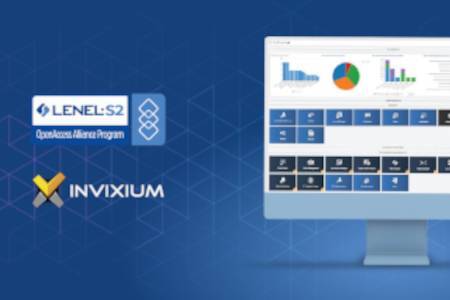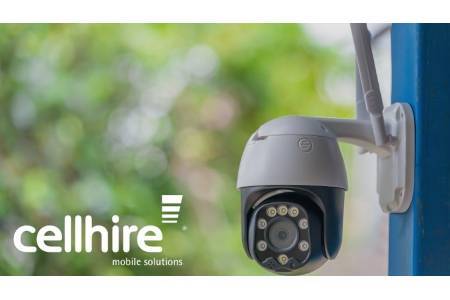 It’s time we show retailers that video is for far more than just a security measure, by Kevin Waterhouse, Managing Director, VCA
It’s time we show retailers that video is for far more than just a security measure, by Kevin Waterhouse, Managing Director, VCA
The recovery starts now. Life as we know it is different, but it’s about as normal as it’s going to get for the foreseeable future. Many sectors, including our own have needed to make several adjustments to accommodate social distancing regulations which were previously unheard of – especially in crowded cities where personal space was a luxury forgotten in the second half of last century.
However, the sector which has perhaps had to make the biggest changes is retail. From grocery to luxury, it’s all changed. Even at the busiest sales periods around Christmas and New Year, retailers never required customers to queue outside or manage their occupancy levels so stringently – it was just part and parcel of the calendar year. To help manage the change in circumstance, they have started to turn to security infrastructure to help automate procedures, thereby freeing up staff more. But the truth is, we can be doing more to demonstrate the value of video analytics, as this is just the tip of the iceberg.
The problem is, retailers often view CCTV cameras as a necessary security deterrent. They’re there to try and stop bad actors and catch them if they do commit a crime. The system is often managed by security teams and thought of in isolation. However, this really shouldn’t be the case. The fact of the matter is that footage from cameras can help retailers across all areas of their business – they just need to realise this and unlock the benefits.
1. Maximising store management and the customer journey
Customer experience was probably the biggest buzzword in retail until occupancy usurped it due to COVID-19. However, despite the ‘new normal’, the customer experience is still the holy grail of retail, as due to the competitive nature of the market, if shoppers have a poor experience, it’s unlikely they’ll return.
This is also an area that retailers could benefit from using video analytics. From hot spots through to store design, they should be looking at how customers navigate the store. From checking that promotions are attracting traffic through to social distancing enforcements, looking at store hotspots could improve the customer experience. For example, most stores have an aisle closest to the tills. In superstores this is not so much the case, but in metro stores or clothes shops, there’s always one display which sits next to the queue. However, in many stores, these smaller yet popular items (soap, tissues, cards) mean shoppers still going around the store are interacting with shoppers waiting to pay. Intelligence confirming this should be passed onto store designers, who should then – for social distancing measures – look to swap the layout to ensure this potential contamination is prevented.
2. Occupancy management
Whilst many stores have stopped with the manual policing of entrances, now shopping centres are opening up again, stores with multiple entrances and exits are going to be put under strain. Monitoring ingress and egress when there is more than one route in and out takes so much communication that it’s far more efficient to automate. Again, VMS installers and integrators need to be working with their retail clients here to advise on how best to monitor people compliantly. We
have seen great success with pose estimation (skeletal analytics), as this method looks for 18 points of recognition in the human frame, and is much more able to identify people in densely populated area. It also performs significantly better than conventional analytics indoors, because it copes with light reflections and occlusions very well. The added benefit of Pose Estimation is that usually existing cameras can be utilised, so there is no longer a need for a dedicated people counting camera above the door. So using this to count how many people are in a store is ideal and relatively easy to activate, as it can be used with the existing camera infrastructure. For those unable to invest in the extra resource, using cameras positioned adjacent to the entrance or exit can be used for counting, and linked up to a simple traffic light system, making it easy for customers to enter the store. By utilising what’s already there, time is saved and personnel previously needed to monitor occupancy are able to add value elsewhere, meaning all business departments benefit.
3. Legal claims
Retailers know that slip, trip and fall is a burden to the balance sheet, with customers rightly or wrongly looking for compensation if they do take a tumble. However, this is an area video analytics can again prove its worth across the business. For starters, it can identify if the event happened, and should be the first port of call if legal proceedings are lodged. It can be used to prove if the event even occurred, or if someone is acting honestly or not. When the claims are genuine, it can also contribute towards trends analysis. It might be that slips and trips are disproportionately high in one area of the store, and that this needs further investigation as to why it’s a danger-zone. Leveraging these insights across the business can be used not only to increase profitability thanks to no duplication of effort, but also encourage cross-departmental problem sharing – enhancing communication and efficiencies.
What’s clear is that retailers can do more with their CCTV systems – they just need to be encouraged to think of it as a business intelligence application – not just a security deterrent. With proper management, it could help break down siloes, leading to better investment opportunities thanks to an improved return on investment. Vendors, installers and integrators have a fantastic opportunity to get closer to different departments if we can just encourage retailers to open their minds to the possibilities of video analytics. This close relationship will help us all get closer to end users and tailor solutions to help benefit that holy grail – the customer experience, leading to happy stakeholders along the supply chain.
See more news here.













